What's New
Displaying results 2421 - 2430 of 4052
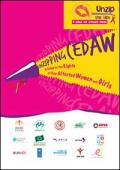
Resource | Guidelines,
Through this guide, Unzip the Lips aims to promote the engagement of Key Affected Women and Girls, (KAWG) community networks and NGOs with the Convention on the Elimination of all Forms of Discrimination Against Women (CEDAW). The goal is to advocate for the needs and rights of these groups, and to ensure that their sexual reproductive health and rights are respected, protected and fulfilled.
In this guide, you will learn about the purpose of CEDAW. You will also learn about why and how to engage with this international agreement to further the sexual and reproductive health and rights of KAWG. This guide provides concrete information regarding your rights, and how to claim them at a national level.

Resource | Publications,
Jumping Hurdles: Access To HIV Health Services for Young Men Who Have Sex with Men and Young Transgender Persons in Asia and the Pacific presents the barriers in accessing health services and the recommended elements of youth friendly services shared during the 3rd Regional Consultation. It is a part of YVC’s advocacy efforts targeting healthcare providers and governments in selected countries in the region.
The discussion paper also strategically compliments the new WHO’s Consolidated guidelines on HIV prevention, diagnosis, treatment and care for key populations by offering an insight into the specific needs of the populations lying at the intersection of being young and being sexually marginalized.
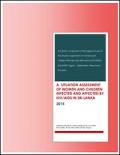
Resource | Publications,
Globally, AIDS-related illnesses are the leading cause of morbidity and mortality among women of reproductive age. In areas such as Western and Central Europe and Australia, women account for a elatively low percentage of people living with HIV. However, in regions such as sub-Saharan Africa, South and South East Asia and the Caribbean, the percentage is significantly high.
HIV prevalence among women and children is relatively low in Sri Lanka compared to other Asian countries. Some of the factors that may be contributing to the low prevalence of HIV/AIDS among women in Sri Lanka are its cultural context that strongly emphasizes moral values, high literacy level, better health care and increased accessibility to health institutions including those for sexually transmitted infections (STIs) and PMTCT initiatives.
However, Sri Lanka is in midst of flourishing economic development and hence multiple social, cultural and economic changes are taking place in the country. In spite of this economic boom, there are certain dangers lurking beneath the surface. Risk of HIV/AIDS can be stated as one such important public health issue especially in relation to women and children.
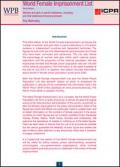
Resource | Publications,
This third edition of the World Female Imprisonment List shows the number of women and girls held in penal institutions in 219 prison systems in independent countries and dependent territories. The figures include both pre-trial detainees/remand prisoners and those who have been convicted and sentenced. The List also shows the percentage of women and girls within each national prison population and the proportion of the national population that are imprisoned females (the female prison population rate per 100,000 of the national population). The information is the latest available at the end of July 2015. In addition, this edition includes information about trends in female prison population levels since 2000.
Resource | Presentations,
Browse and view tables, charts and graphs illustrating HIV/AIDS expenditures in the Asia Pacific region.

Resource | Publications,
In this research, the Coordination of Action Research on AIDS and Mobility in Asia (CARAM Asia) has focused on a group of migrant workers who are especially vulnerable to HIV: males who have sex with males, otherwise known as “MSM.” MSM migrant workers suffer multiple layers of stigma and discrimination, which, in combination with the risky sexual behaviors they engage in heightens their risk of HIV infection.
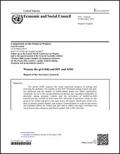
Resource | Publications,
The global AIDS response has made significant progress in halting and reversing the epidemic. The number of new HIV infections among women and girls has stabilized and the number of AIDS-related deaths has fallen significantly worldwide. Access to life-saving antiretroviral therapy has expanded considerably, in particular among pregnant women, and the prevention of mother-to-child transmission has resulted in fewer new HIV infections in newborns. However, the progress for women and girls is not equal across all regions. Much more needs to be done to advance gender equality and women’s empowerment, to scale up prevention and treatment efforts for women and girls and to address the legal, economic and social factors that continue to put them at greater risk of HIV infection.
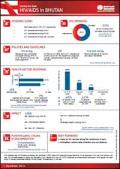
Resource | Fact Sheets,
Country fact sheet HIV/AIDS in Bhutan provides information on epidemic, HIV spending, policies and guidelines, health sector response, etc.
Resource | Presentations,
Get an overview of the HIV/AIDS situation for Transport Workers in the Asia-Pacific region. Browse and view charts and graphs illustrating data on this population's HIV prevalence and epidemiology, risk behaviors, vulnerability and HIV knowledge, and national response.
Resource | Presentations,
Get an overview of the HIV/AIDS situation for Clients of Sex Workers in the Asia-Pacific region. Browse and view charts and graphs illustrating data on this population's HIV prevalence and epidemiology, risk behaviors, vulnerability and HIV knowledge, and national response.





